Travel Tips
Written by Marike Cronjé
If there is one thing that Ker & Downey® Africa knows well it is the unique natural attractions that attract travellers to this rugged continent from around the world. Visiting the Ngorongoro Crater in Tanzania features high up on many adventurer’s bucket lists, and for good reason – this magnificent natural wonder is one of the best places on the planet to see the Big Five. The wild and untamed beauty of Ngorongoro is enough of a reason to visit in its own right. To give you an idea of what you can experience on one of our Luxventure® Trips to Tanzania, we thought we would give you the lowdown on what we think you might want to know about this African gem.
The Ngorongoro Crater is a huge crater inside an extinct volcano, located in northern Tanzania on the Eastern Great Rift Valley. Today, the 260-kilometre squared interior of this extinct volcano is one of the most popular places in Africa to track the Big Five – lions, elephants, leopards, rhinoceroses and Cape buffalo thanks in part to the varied landscapes inside the crater, with expanses of savannah, forest, bushland and freshwater lakes side-by-side. Ngorongoro Crater is listed as one of the Seven Natural Wonders of Africa and is definitely somewhere to cross of your list. Its location just 180 kilometres along the main road from central Arusha makes Ngorongoro Crater perfect for travellers who also want to experience one of Africa’s most vibrant cities.
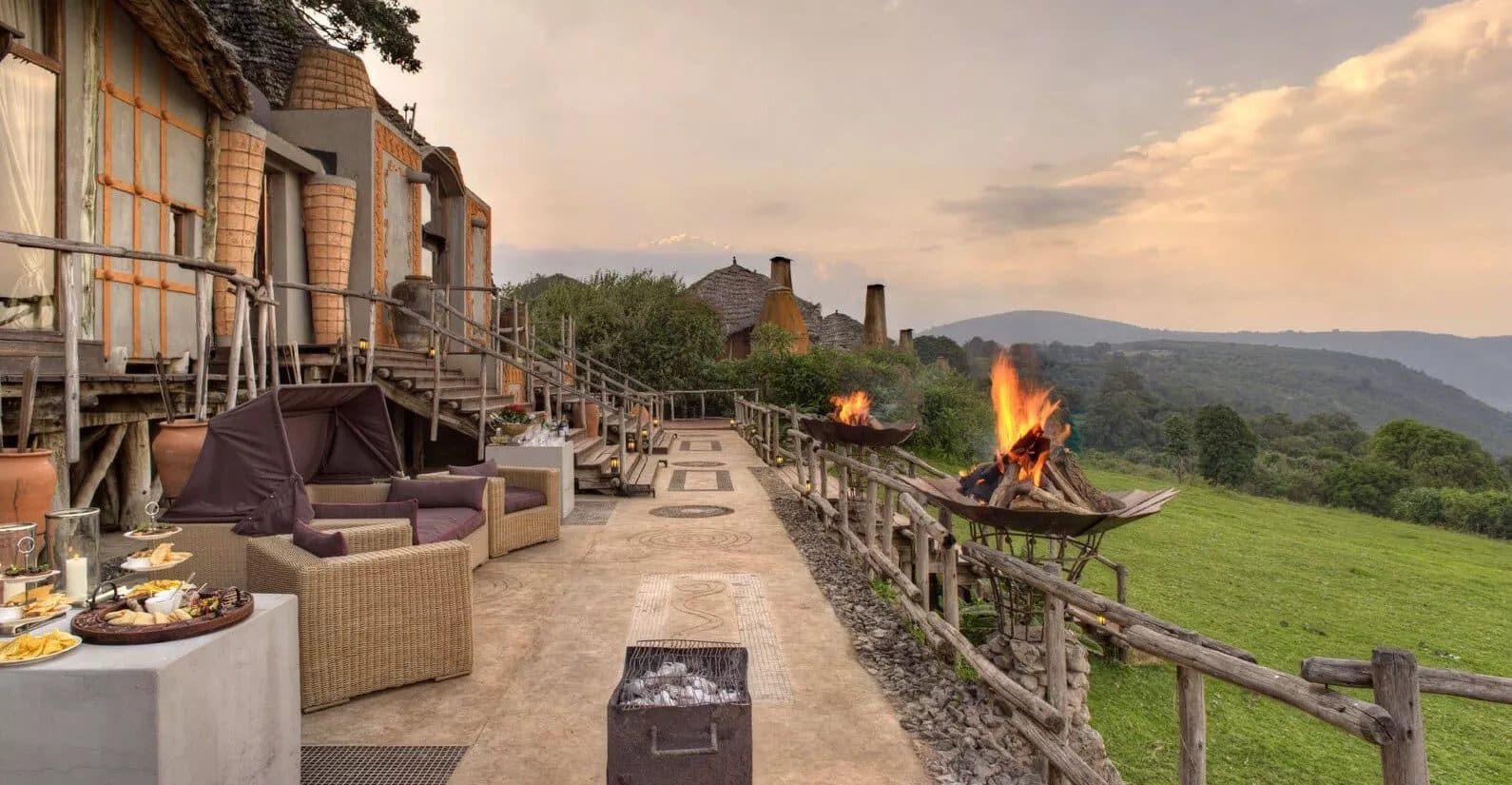
The Big Five are the most sought-after sights amongst those visiting the Ngorongoro Crater, with wild Cape buffalo, herds of stampeding African elephants, prides of lions, solitary leopards and huge black rhinoceroses searching for food and fresh drinking water across the crater. There are also more than 400 bird species that call the crater home, alongside zebra, cheetahs, jackals, Grant’s and Thompson’s gazelle, flamingos, bat-eared foxes and wildebeest.
Wildlife is not the only sight that you can savour inside Ngorongoro though, as the rugged peaks of the crater’s edge cast shadows in the high midday sun, sweeping views across the crater from the rim are simply spectacular, and the unmistakeable cluster of tall fig trees planted by the Maasai people in the early 19th century and their villages draw your eyes to the north of Ngorongoro Crater.
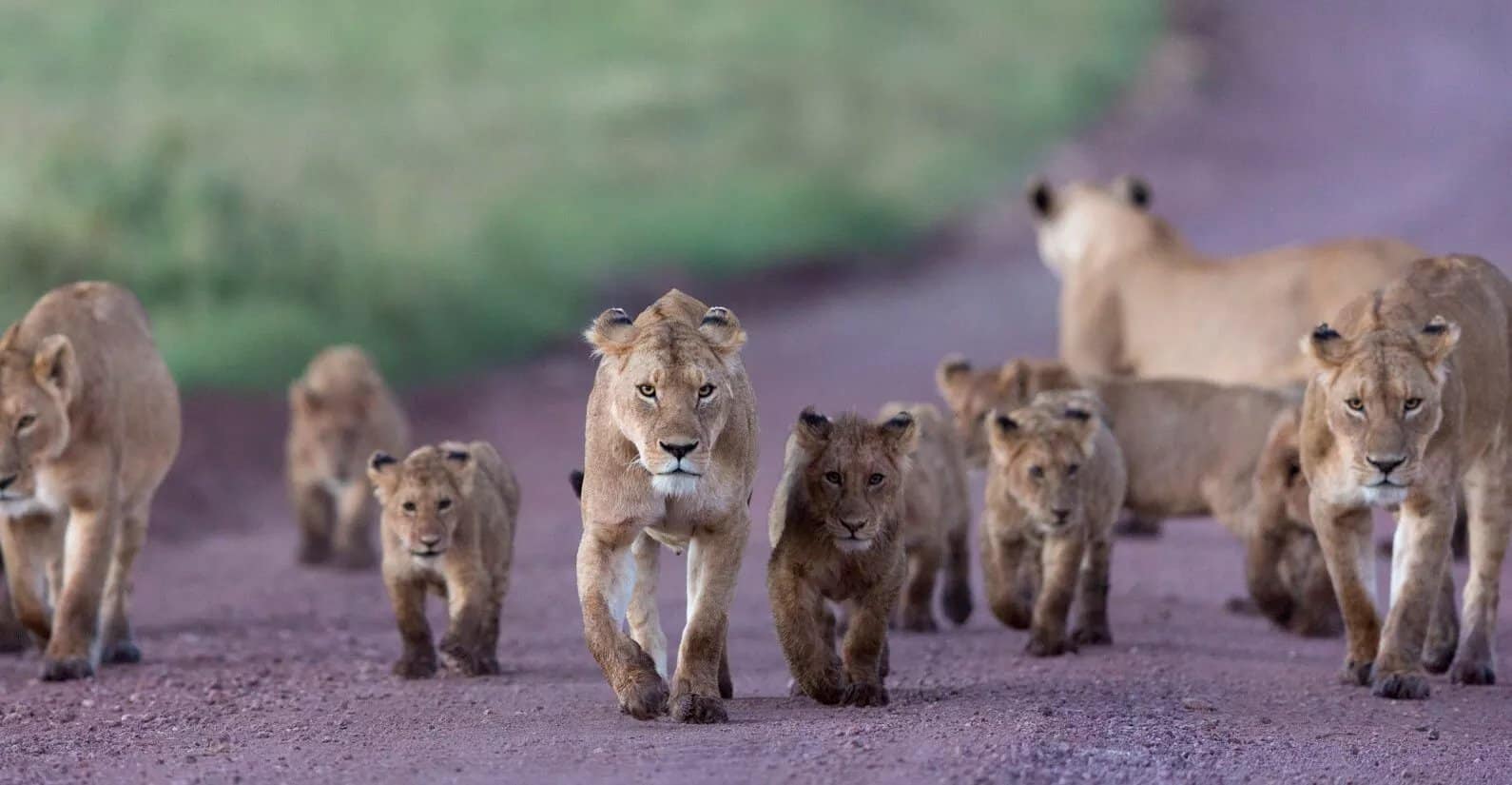
There is no shortage of adventurous activities available inside the Ngorongoro Crater. Here are a few of our recommendations:
Game drives are without a doubt the most popular activity in the Ngorongoro Crater, and the abundance of buffalo and tusker elephant herds, prides of lions, black rhinos and elusive leopard give the crater the name ‘garden of Eden’. Most of the wildlife do not migrate, instead choosing to rely on the fertile ground and free-flowing rivers, meaning that game viewing is possible throughout the year.
The busy months for game drives fall between July to August and December to February, but even when the crater is busy with adventurers, there is no shortage of wildlife to see. Expert guides with armed guards are required for game drives in the Ngorongoro Crater, and it costs $300 per vehicle and $60 for the park entrance fee. Game drives in Ngorongoro are both exhilarating and awe-inspiring at the same time.
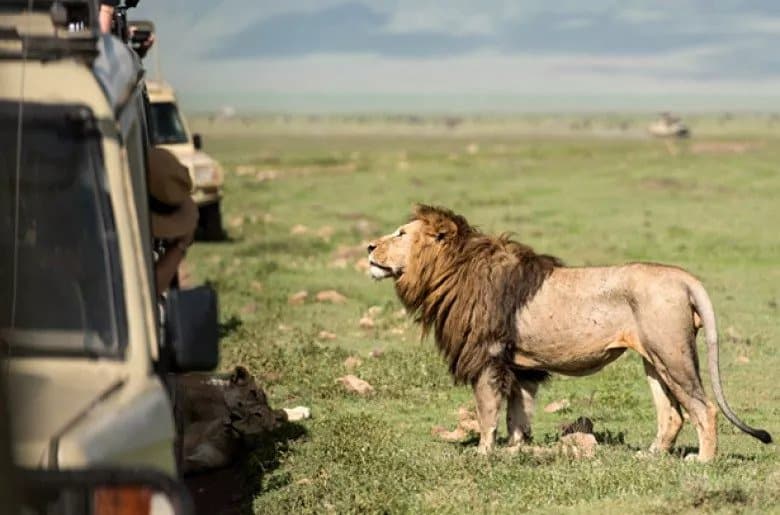
The best views of the Ngorongoro Crater are to be had on a rim walk some 610 metres above the crater floor. Starting at the Lemala gate on the eastern side of Ngorongoro, professional guides will take you along a well-trodden track traversing through thick and untamed forests, past Maasai farms where you will see tribesmen herding their cattle like they have done for centuries, following the contours of the volcano. Walking along the rim of the Ngorongoro Crater is the best way to see all of the animal and plant life that lives here and is especially spectacular at sunrise or sunset.
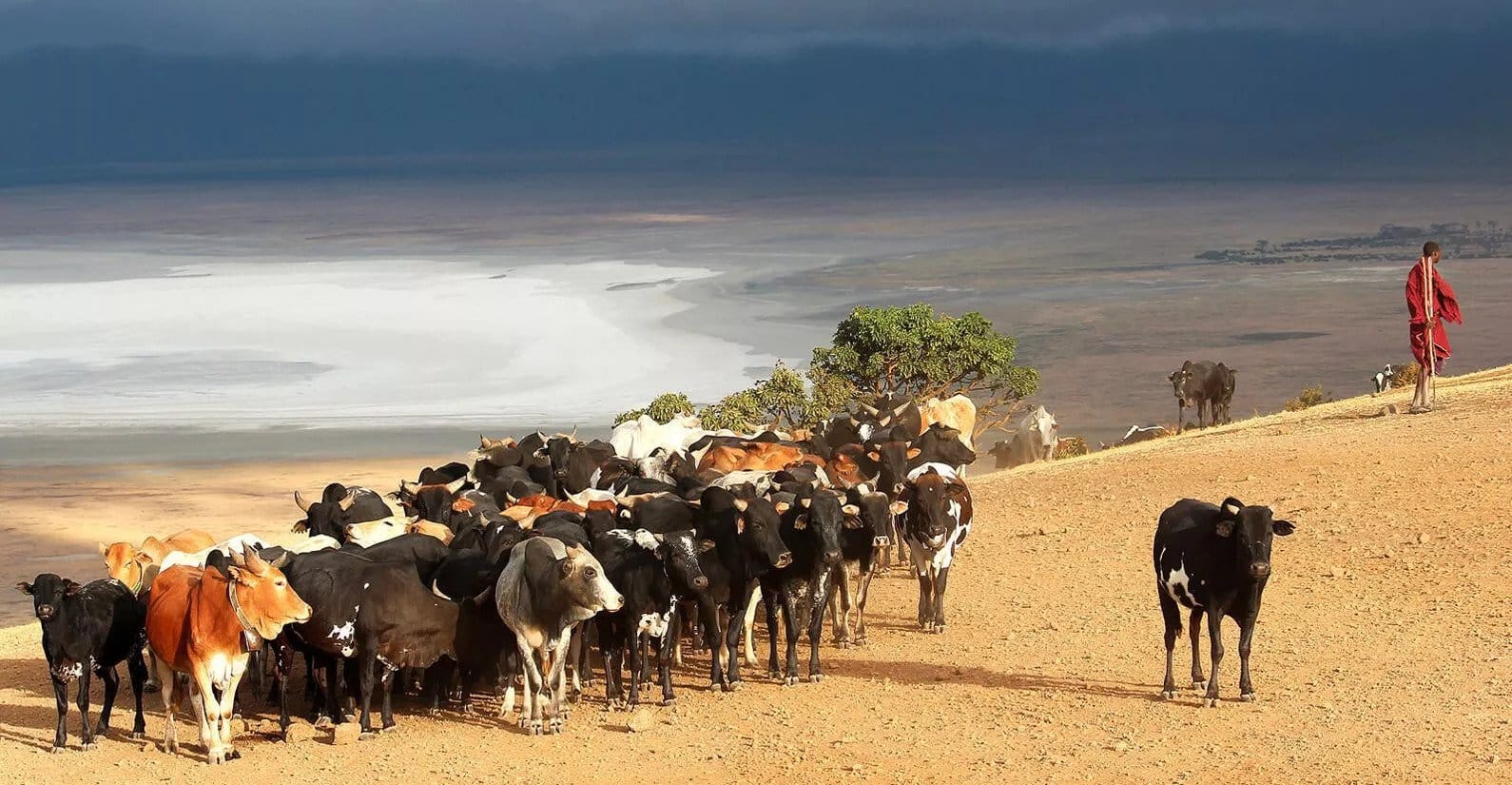
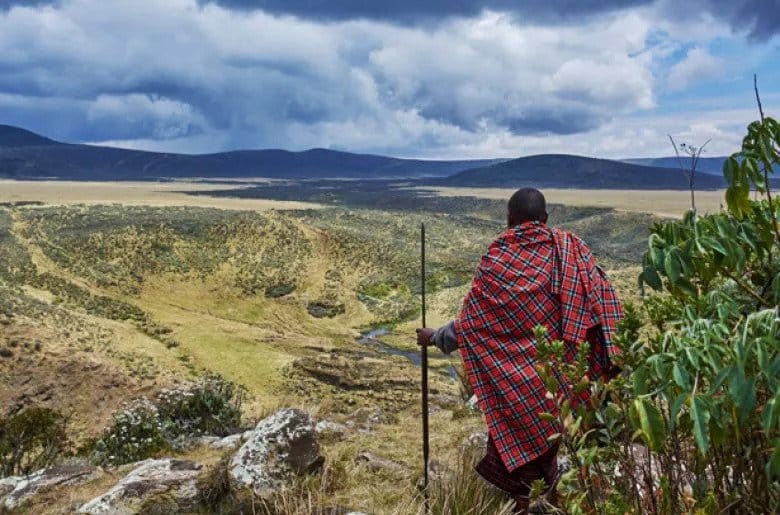
Accommodation in the Ngorongoro Crater is as varied and memorable as the crater itself. Here are two of Ker & Downey® Africa’s top recommendations for where to stay when in northern Tanzania:
andBeyond’s Ngorongoro Crater Lodge is perched overlooking the crater, deep in the lush forests on the rim. This luxurious lodge comprises three adjacent camps with 30 elevated Maasai-inspired suites with unrivalled views across the landscape. Each camp includes an elevated viewing deck, dining room and lounge where guests can come together to share their stories. Each suite comes complete with floor-to-ceiling windows with uninterrupted views of the 25,000 animals in the crater and Maasai villages that have remained unchanged for centuries.

The Highlands Ngorongoro camp redefines what it means to stay in the Ngorongoro Crater. This upmarket camp clings to the edge of a mountain forest on the slopes of the Olmoti volcano, in the north of the Ngorongoro. Eight Perspex and canvas domed tents with en-suite bathrooms and solar generated power sources are designed to suit every adventurer visiting Ngorongoro. Each tent boasts sweeping views across the crater and to the edge of the Serengeti, combining the style of traditional Maasai boma tents with refined luxury. The Highlands Ngorongoro is a truly unique accommodation option.
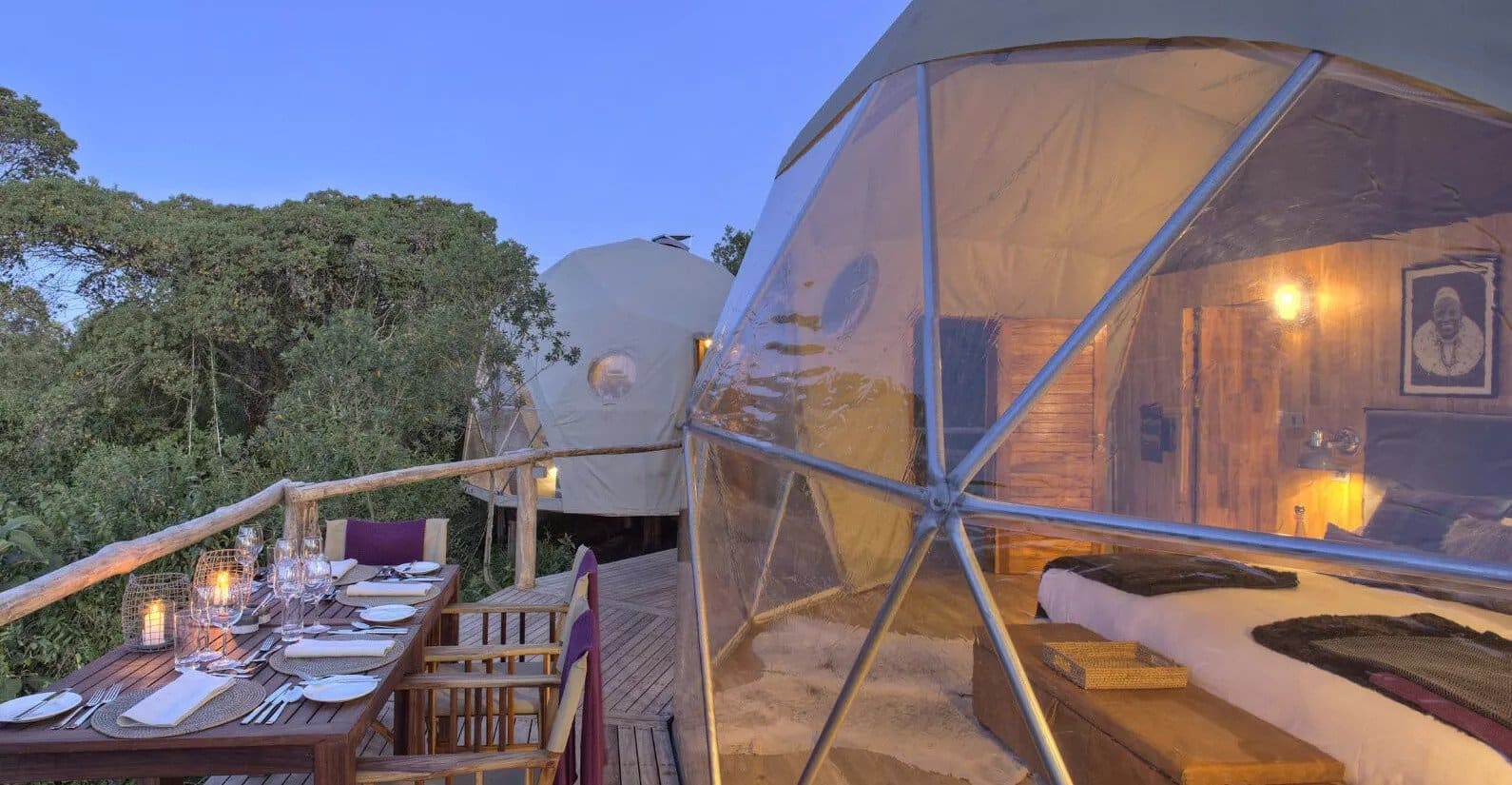
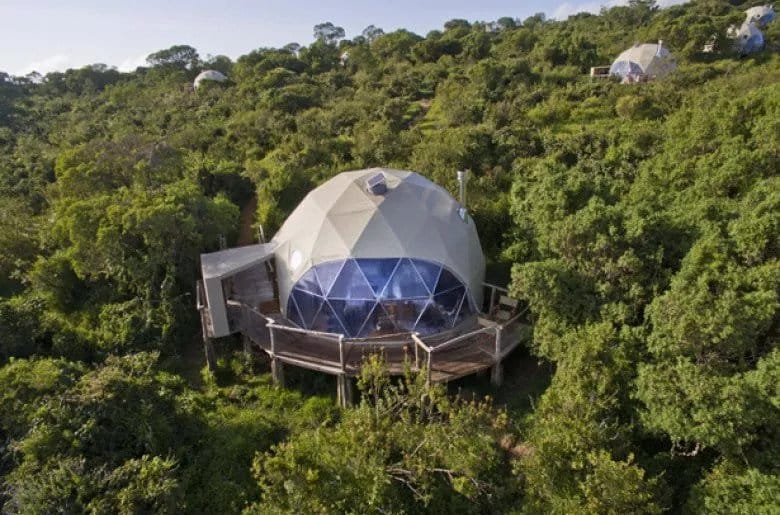
Head office:
7 Bree Street, 6th Floor, Touchstone House, Cape Town, South Africa
+27 (0)21 201 2484
[email protected]
United Kingdom: Sportsman Farm, St Michaels, Tenterden, Kent
Ker & Downey® Africa is compliant with COVID-19 Industry Protocols.


Head office: 7 Bree Street, 6th Floor, Touchstone House, Cape Town, South Africa
+27 (0)21 201 2484
[email protected]
United Kingdom: Sportsman Farm, St Michaels, Tenterden, Kent
Ker & Downey® Africa is compliant with COVID-19 Industry Protocols.